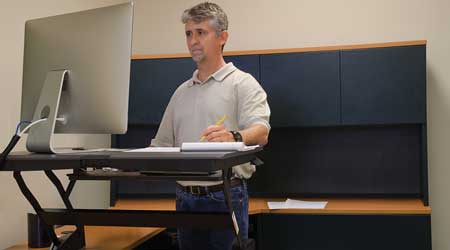How to Make the Financial Case for Health and Wellness
Several studies and real-world success stories show that focusing on occupant health and wellness reaps demonstrable financial rewards.
Classical continuous improvement philosophy states that you can’t manage what you don’t measure. Employee productivity and effectiveness are more difficult to measure than energy, so it’s easy to see why energy management is more prevalent than indoor environmental management. Absenteeism and employee retention are easy to measure, but for some companies, productivity and happiness are largely anecdotal. This prevents these human factors from even entering the decision “equations.” As a result, human factors are overlooked by building owners and designers as a way to improve building value.
Fortunately, over the past couple of decades, case studies have gathered overwhelming evidence that the indoor office environment has a significant impact on the productivity, health, and wellbeing of its occupants.
Taking ventilation as an example, a study in 2016 by Allen, Satish, Santanam, Spengler, MacNaughton, and Vallarino evaluated indoor environmental quality (IEQ) conditions found in “Green” and “Conventional” buildings and the impacts on objective measurements of human cognitive functioning. The results were astonishing: On average, subjects scored 61 percent higher on cognitive skills on days spent in the “Green” building environment with low VOCs and 101 percent higher on days spent in the “Green+” building environment with low VOCs and carbon dioxide levels.
More evidence comes from an Urban Land Institute article, “Making the Case for Health: Insights from the First WELL Projects.” The article was based on interviews with people from some of the first WELL-certified office buildouts. Arup, one of the companies interviewed, stated that their office buildout was completed at only a 0.5 percent greater cost and expects that happier and healthier employees will make WELL worthwhile. CBRE was interviewed and reported that in their WELL-certified space they saw one third less employee turnover while simultaneously increasing their hiring rate.
The World Green Building Council’s publication, Building the Business Case: Health, Wellbeing and Productivity in Green Offices, reported on a recent survey of Canadian building owners on the topic of health and wellbeing. In that survey 38 percent of respondents reported an increase in building value of 7 percent or more, 46 percent say they lease space more quickly, and 28 percent indicate they are able to charge premium rents.
The publication also cites case studies from around the world on different sustainability programs, including both WELL and LEED. One case study was the 277,000-square-foot Saint-Gobain and CertainTeed North American headquarters, in Malvern, Pa., which houses more than 800 employees. The facility is certified LEED Platinum (Core & Shell and Commercial Interior) and was designed to be a living laboratory to test the company’s building performance products. The case study reports that “Saint-Gobain call centre staff in their new North American headquarters have achieved a 97 percent increase in sales-generated leads and 101 percent increase in leads per call since moving into the building.”
Another case study looked at the Toronto & Region Conservation Authority. Having outgrown its 1970s office, the authority needed new space. According to the case study, the authority “wanted its new headquarters to be highly sustainable, in keeping with its mandate as a conservation organization, but knew that this would take some time to achieve, so it moved into an interim office. A 170 percent increase in overall employee workplace satisfaction was seen when [the authority] moved into an interim office with new health and wellbeing features. Their new office, to be finished in 2021, will be designed from direct consultation with employees” and will aim for LEED Platinum and WELL Certification.
Many factors affect profitability. But by using best practices for building envelope and environmental systems, building with sustainable and low VOC materials, and operating the building with advanced methods addressing the health and wellbeing of the occupants, facility managers can create a property operating framework that over time reduces costs, improves productivity, reduces turnover, and increases the life expectancy of capital equipment.
When economic downturns happen, it is the facilities that generate the best margins, have the highest occupancy, or have the highest satisfaction that weather the storm. Sustainable building programs such as WELL and LEED can have a considerable and measurable effect on the success of a business by lowering maintenance costs, attracting greater sources of revenue, and increasing occupant happiness and productivity; the results speak for themselves.
Wayne D. Alldredge, LEED-AP, WELL-AP, GGP, is associate director, VCA Green.
Email comments and questions to edward.sullivan@tradepress.com.
Related Topics:













